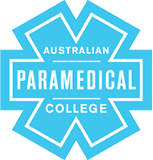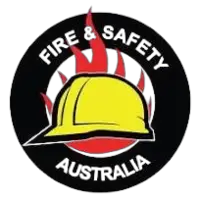
How do I become an Emergency Services Officer (ESO) in Northern Territory?
Get qualified to work as an Emergency Services Officer (ESO) with a course recognised across Australia. Speak to a training provider to learn more.
Course providers in Northern Territory
The following providers offer Emergency Services Officer (ESO) courses in Northern Territory.











Common questions
In Australia, a full time Emergency Services Officer generally earns $1,500 per week ($78,000 annual salary) before tax. This is a median figure for full-time employees and should be considered a guide only. As you gain more experience you can expect a potentially higher salary than people who are new to the industry.
 Courses.com.au Team
Courses.com.au Team
The emergency response sector has seen a strong increase in employment numbers over the last five years. There are currently 19,700 people working in this field in Australia and many of them specialise as an Emergency Services Officer. Emergency Services Officers may find work across all regions of Australia.
Source: Australian Government Labour Market Insights
 Courses.com.au Team
Courses.com.au Team
If a career as an Emergency Services Officer interests you, consider enrolling in a Diploma of Paramedical Science. This course will prepare you for an emergency response role with subjects covering basic life support and transport of patients to a medical facility.
 Courses.com.au Team
Courses.com.au Team
Related career opportunities
Browse occupations related to Emergency Services Officer (ESO)
Further reading


Do I need a Certificate IV In Work Health and Safety?
22nd October 2019
What can you do with a Certificate II in Security Operations?
5th January 2022All emergency services officer (eso) courses
- HLT51020 Diploma of Emergency Health Care
- RIIERR201E Conduct Fire Team Operations
- PUAEME007 Provide Emergency Care for Suspected Spinal Injury
- PUACOM005 Foster a Positive Organise Image in the Community
- PUAOPE018 Control a Level 2 Incident
- PUAEMR034 Establish and Manage a Recovery Centre
- PUASAR002 Undertake Swiftwater and Floodwater Rescue and Recovery
- PUAFER006 Lead an Emergency Control Organisation
- PUARCV001 Provide Psychological First Aid
- UEGNSG018 First on Site Response to Gas Pipeline Emergencies
- PUAFIR203 Respond to Urban Fire
- PUA41019 Certificate IV in Public Safety (Leadership)
- RII41319 Certificate IV in Emergency Response Coordination
- PUAFIR308 Employ Personal Protection at a Hazardous Materials Incident
- 22611VIC Course in Awareness of the Australasian Inter-service Incident Management System (AIIMS)
- PUAEMR038 Work Within an Emergency Management Context
- PUAFIR017 Work Safely Around Aircraft
- PUAFIR306 Identify, Detect and Monitor Hazardous Materials at an Incident
- Graduate Certificate in Emergency and Disaster Management
- FWPCOT3329 Perform Complex Four Wheel Drive Operations
- PUASAR022 Participate in a Rescue Operation
- RIIERR205D Apply Initial Response First Aid
- PUA20719 Certificate II in Public Safety (Firefighting Operations)
- PUAFIR204 Respond to Wildfire
- TLIF3091 Apply awareness of dangerous goods and hazardous materials requirements
- PUAOPE012 Control a Level 1 Incident
- PUA30319 Certificate III in Public Safety (Aquatic Search and Rescue)
- PUA30619 Certificate III in Public Safety (Firefighting and Emergency Operations)
- SISCAQU022 Provide Oxygen Resuscitation and Therapy in an Aquatic Environment
- PUAOPE015 Conduct Briefings and Debriefings
Emergency Services Officer (ESO) careers
If you're looking to embark on a rewarding career in the emergency services sector, the Emergency Services Officer (ESO) courses in Northern Territory provide a variety of learning opportunities tailored to both beginners and experienced professionals. With 18 different courses available, ranging from Vocational Education and Training to Short courses, you can find the perfect fit for your career goals. Popular beginner courses like the Certificate III in Emergency Response and Rescue (RII30719) or Apply Fatigue Management Strategies (TLIF2010) equip you with essential foundational skills for emergency situations.
Those with previous experience will find advanced courses that build upon their existing knowledge. Notable options such as the Diploma of Emergency Health Care (HLT51020) and the Graduate Certificate in Emergency and Disaster Management will help enhance your expertise and open doors to higher-level roles. Both new and seasoned professionals will benefit significantly from these comprehensive training programmes that focus on real-world applications and skills necessary for ensuring public safety and health.
In addition to the courses available, it's important to consider the various job roles that are associated with becoming an Emergency Services Officer. Opportunities such as an Emergency Medical Technician, Ambulance Service Paramedic, or even an Industrial Medic are all pathways that can stem from this career training. These roles not only require dedication and skill but also provide a vital service to communities throughout the Northern Territory and beyond.
The Northern Territory is home to a diverse range of environments, from the bustling urban centres to remote areas, making the role of an Emergency Services Officer even more crucial. The training received through the Emergency Services Officer (ESO) courses in Northern Territory equips individuals to respond effectively to emergencies specific to various settings. Whether responding to incidents on land, in water, or during public gatherings, the skills you acquire will enable you to make a significant difference in times of crisis. Explore your options today and take the first step towards a fulfilling career in emergency services!
